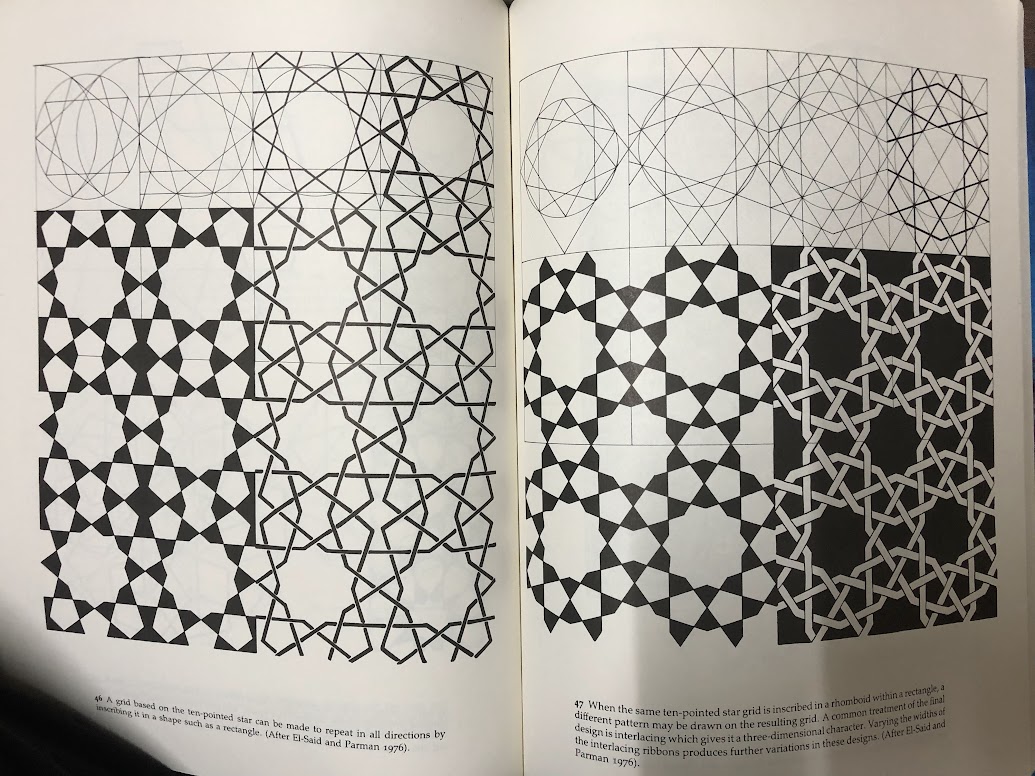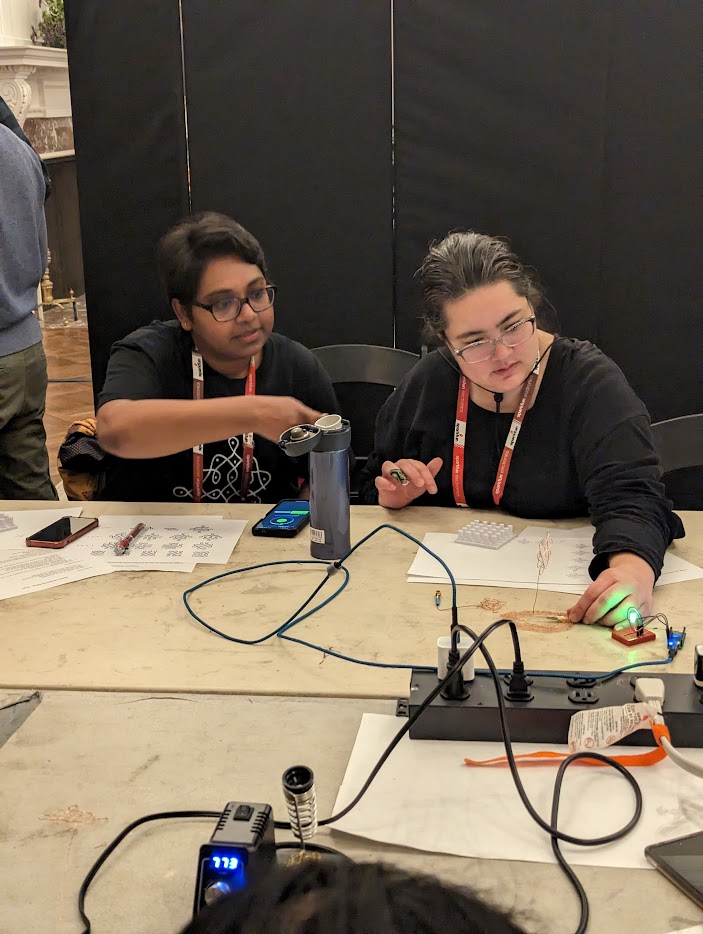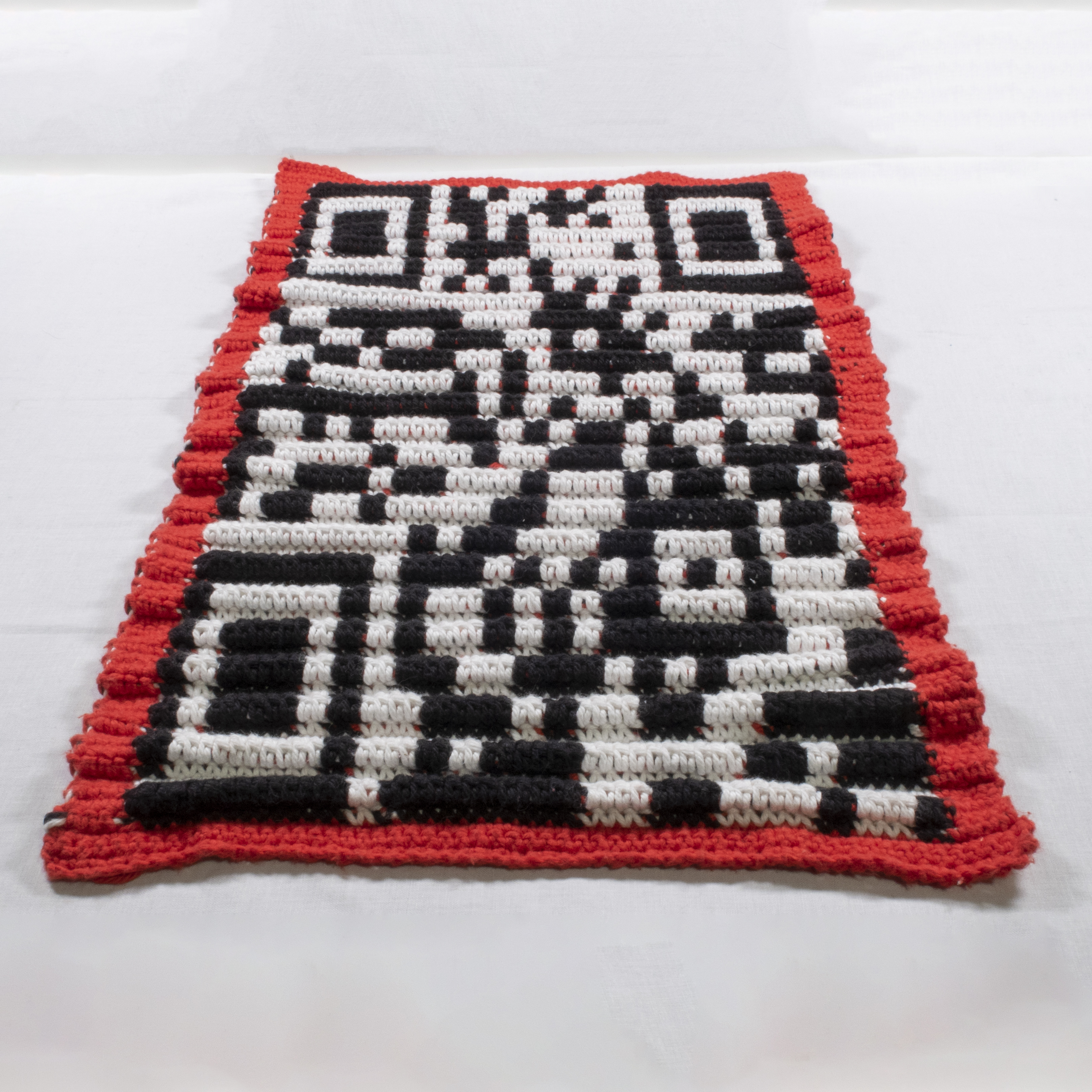I’m Anu! I research, make, craft, code, and sometimes, hack things.
Islamic geometry based period tracking + moon phase calendar 🌒🩸
Shocked by the recent overturning of the Roe v. Wade legislation in the USA (June 24, 2022), people who menstruate around the world were advised in a hurry to back up, delete, and hide their period data from apps, doctors, and even their partners. And just like that, we travelled back a hundred years, developing profound fears of patriarchal state control over female bodies. Menstrual rhythms, which are as mundane and beautiful as observing the moon as it cycles through its phases, have once again become a thing to be suppressed, to go unmarked, and not to exist unless it serves a reproductive purpose.
I could no longer let the stifling narratives -- about periods, fertility, access, choice and its surrounding analytical and predictive data practices -- define how I visualise and perceive my body’s rhythms. So, I decided to make a moon phase and period tracking data viz. monthly calendar based on Islamic geometry patterns. Playing with Islamic geometry’s cyclical and geometric elements has made it a joy to speculate on my body's rhythms and the moon’s cycles through making and coding.
The printed circuit board is made by the founder of Solder Party, @arturo182, and it uses the 2040 Stamp Round Carrier board with CircuitPython to program the LEDs in delectable twilight colours (330019 - period, 190033 - moon). Each circular unit of 10 LEDs is programmed as a single unit. There are 30 units in total (6x5 grid) for 30 days in a month (lunar months always alternate between 29-30 days).

Seeing my period days overlap with the moon phases on a visual display matrix gives me a sense for when my next cycle will arrive. A code snippet for a single month’s tracking looks like this:
show_firstquarter(2, 0x190033)
show_fullmoon(9, 0x190033)
period(14, 0x330019)
show_thirdquarter(15, 0x190033)
period(16, 0x330019)
period(17, 0x330019)
period(18, 0x330019)
show_newmoon(24, 0x0F000F)
In the image above, my period coincides with the third quarter of the moon, so I predict my future cycle happening a row above it, approximating to the next full moon. In this way, I use my self-knowledge to reprogram the calendar and prepare for the following months’ cycles. Accuracy is not crucial as I’m the only person programming and using the device in the privacy of my home.

The Islamic pattern on the circuit board is based on a ten-pointed star grid (one LED for each star) made with a purple solder mask, white silkscreen, and gold for decorative illumination.

The 10-pointed star pattern is from a book I found in my late grandfather’s dusty old library when I last visited my parents in India. The book is called “Islamic Designs for Artists and Craftspeople” by Eva Wilson (Dover Publications).

Some disclaimers
I designed this device for myself but I understand that different bodies have unique needs and that it may not work for everyone. At the same time, there are tradeoffs between privacy and safety. On the one hand, the device is stand-alone and private, meaning that you can use it in the comfort of your home without requiring an Internet connection. On the other hand, the overt visual display means that other home inhabitants can see where you are in your cycle. Some may not feel safe displaying their cycle to family members or housemates. I finally want to clarify that by making this project, I'm not pursuing any pseudo theory that syncs moon phases with menstrual cycles. It's simply interesting to put the cycles next to each other and marvel at them individually and together!
Kolam Antenna Workshop
Workshop for the Open Hardware Summit 2023, New York City
Organizers: Christin Lundgren & Anu Reddy
Kolam is a folk heritage craft from South India, generating intricate, winding, symmetrical, and geometric patterns. In this workshop, we use these patterns to build-a-long Kolam antennas using copper wire through wire-wrapping. All participants took home a Kolam wire-wrapped antenna that they can use for WiFi/Bluetooth applications.
We began the workshop with an introduction to Kolam as a heritage artistic practice and describe its relevance to craftwork and computation. Christin then described how a monopole antenna works.
Following a brief demonstration of wire-wrapping, participants made their own antennas. We provided copper wire and 3D-printed jigs for wire-wrapping the antennas, as well as connectors to add to the antennas. We then incorporated a BlueMacro microcontroller to test the antenna by controlling an RGB LED using the Adafruit Bluefruit Connect App. Participants download the app to test their antenna. Finally, we open-sourced the BlueMacro RGB LED code and made it available to the participants if they wished to modify and use it on their own devices later.




B00B-Factor Authentication in Banjara Embroidery 🧵
B00b-factor Authentication (suggested pronounciation ‘bee-zero-zero-bee’ or ‘bewb’) is a project about intimacy and trust. It incorporates a bra with NFC (near-field communication)︎︎︎ technology embroidered around the nipple area. Two NFC tags, one for each b00b, permit two-factor authentication. The right tag leads to this password-protected project weblink, and the left one provides the password to that link. Suppose a person wishes to activate the message behind the bra. In that case, they will need to actively participate in conveying trust and intimacy with the bra’s wearer. In getting close to the maker-wearer’s body, the b00b-factor authentication bra materialises the discomfort of seeking intimacy and trust with others you barely know.
The project combines two ongoing research practices of mine — open hardware and heritage crafts. In my most recent talk titled ‘Knotty (Naughty) Hardware’︎︎︎ at the Open Hardware Summit 2022, I ended it with a Call to Action for bringing the Open Hardware community closer to heritage craft communities as a move toward generative justice︎︎︎. In this project, I introduce a heritage craft called ‘Banjara Embroidery’, prominent in my hometown Hyderabad (Telangana) and many other parts of India. This style of embroidery is a women-led craft by the Banjara community, well-known for their extraordinary skills in creating vibrant and joyful embellishments on worn garments and apparel. These embellishments frequently include mirrors, coins, pom-poms, and cowrie shells stitched directly onto the fabric (red or indigo cloth). This project focuses on reappropriating mirrorwork by including different kinds of Open Hardware on fabric, like resistors, LEDs, RFID/NFCs, antennas.

Here’s how it works!
To continue reading and to learn more about the project’s historical context, approach, and making process, click here ︎︎︎ (right NFC). The password is ‘banjara’ (left NFC).
Ferozkoh Jaali in code + rhythm
Song credit: Rozi by Eva B (soundtrack from Ms. Marvel)
Made in p5.js
IF AUDIO IS NOT WORKING, TRY THIS:
- Allow cookies
- Click </> in the bar below and press play
Internet of Towels 🧶 - Knotty Articulations
I created the Internet of Towels as part of my exploration into data technologies using only fiber arts and crafts (see, for example, my CryptoCrochet-Key project). In plain view, the towel looks just like any other knitted fabric with an abstract pattern on it, but when tilted to 45 degrees (see bottom image), it reveals a QR code that is detectable to any smartphone camera or QR code scanning app.
The process behind it is the application of computational thinking to making and crafting. My aim was to devise something new and valuable through the creativity emerging from remixing materials, patterns, and abstractions with ideas, objects, and systems (Gaskins, 2021). This project combines two patterns or techniques namely lenticular images and QR codes, resulting in an absurdly new kind of computational object — the Internet of Towels.
Here is the link to a tutorial for making the Internet of Towels.

